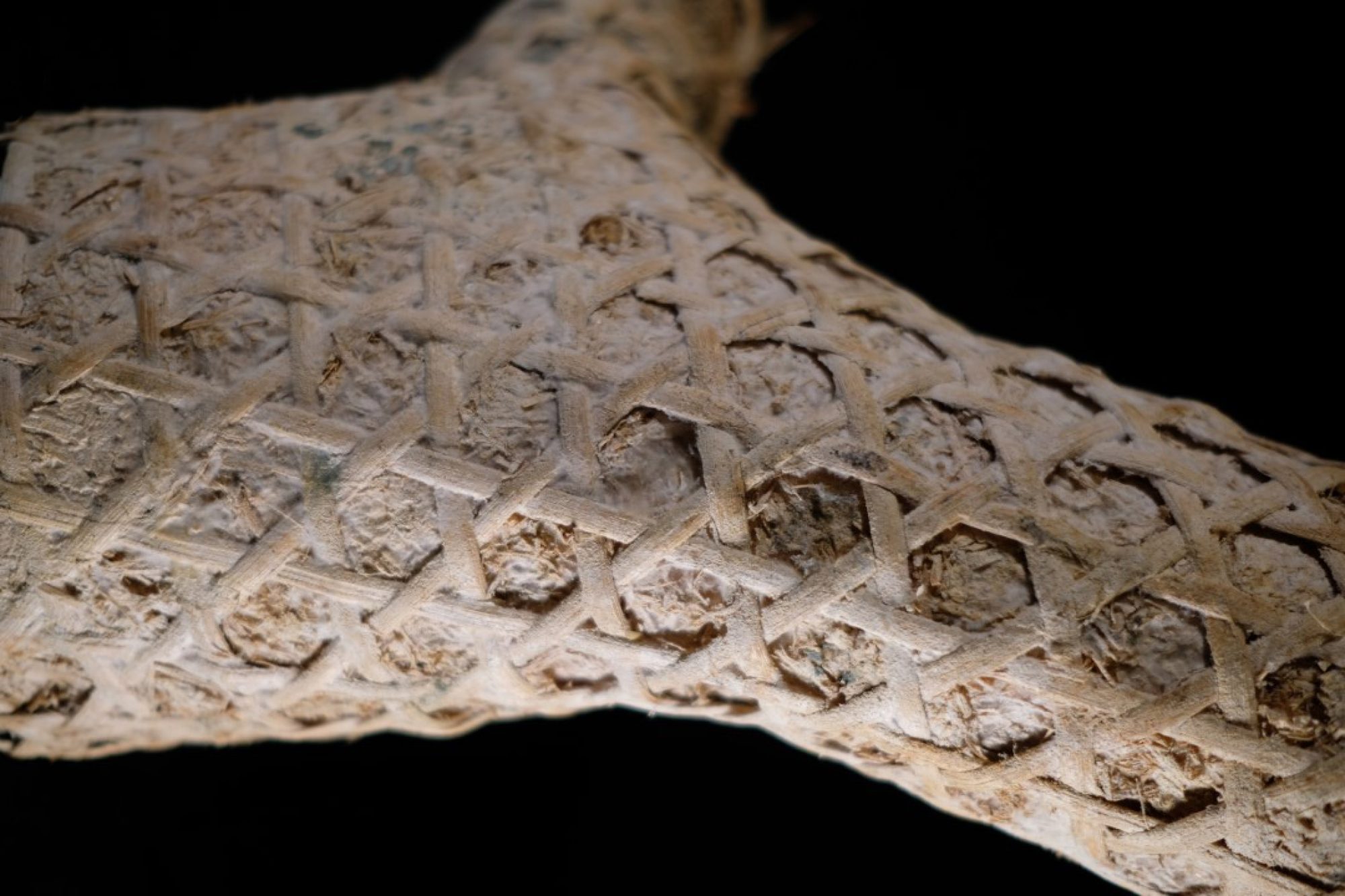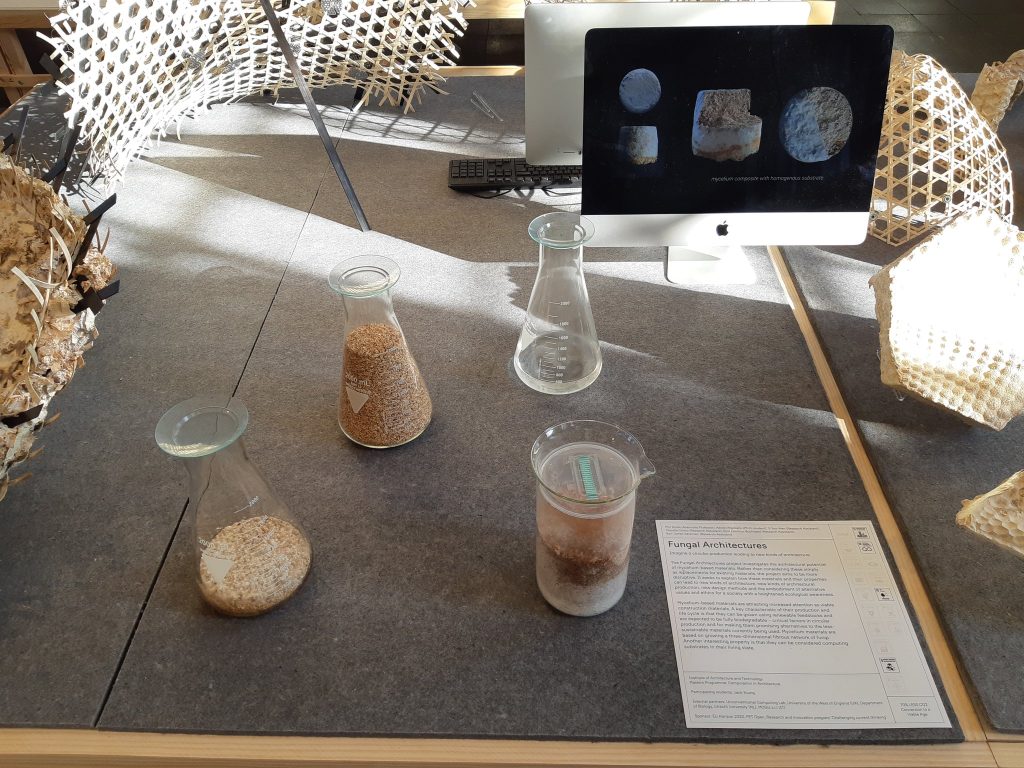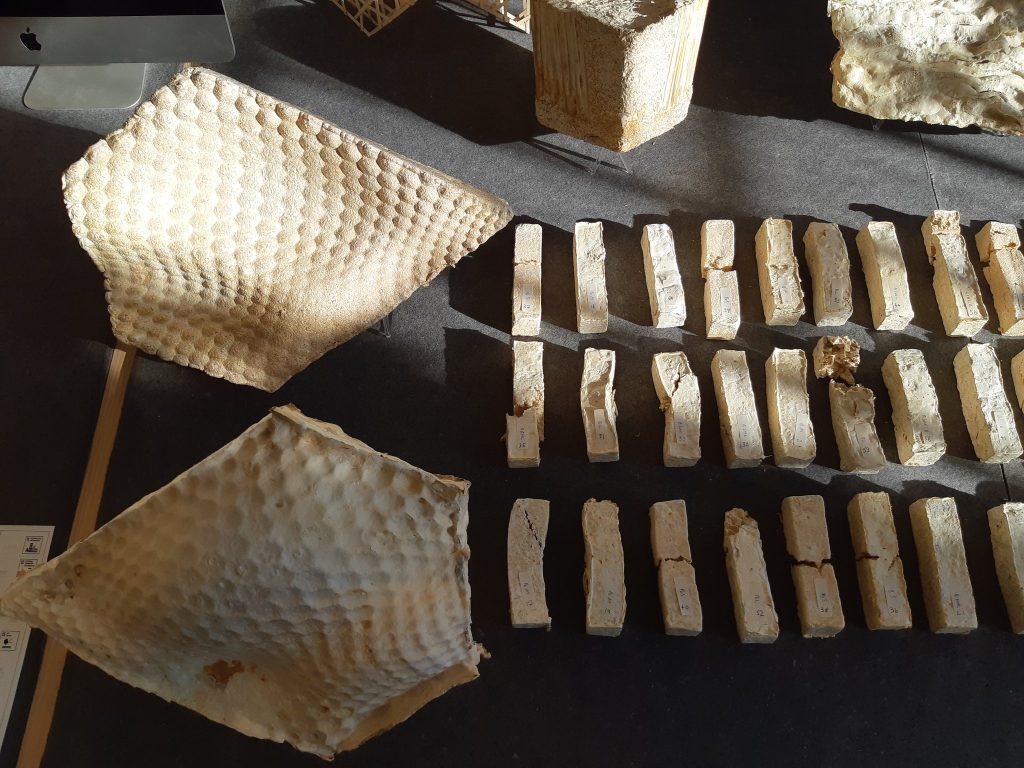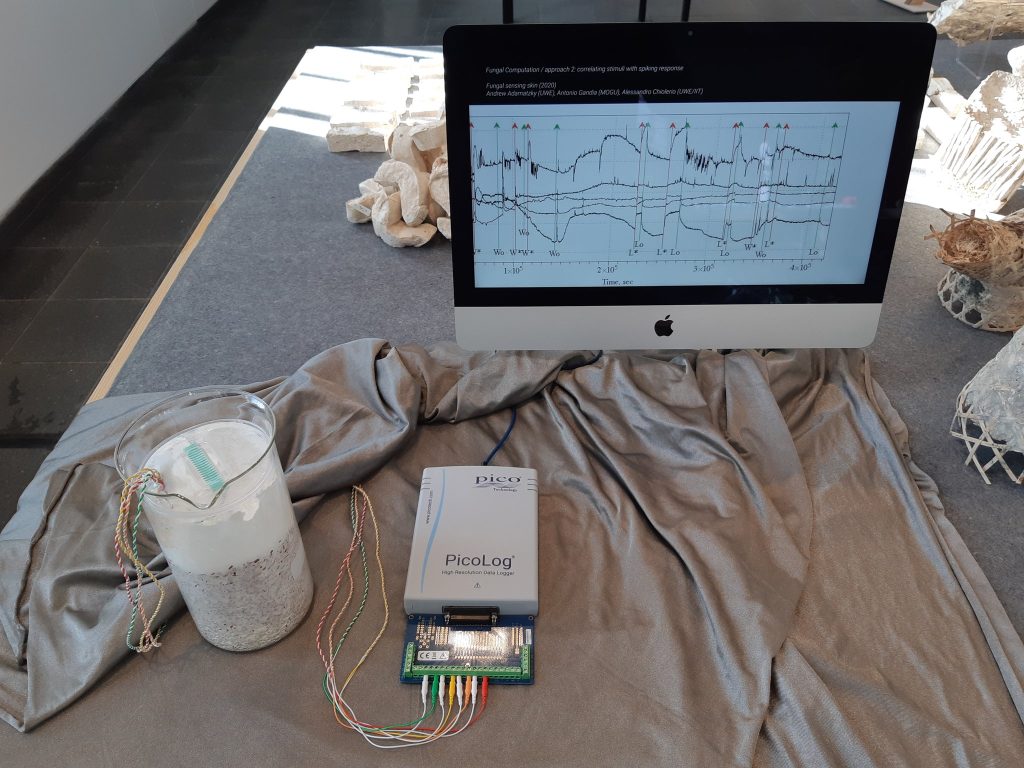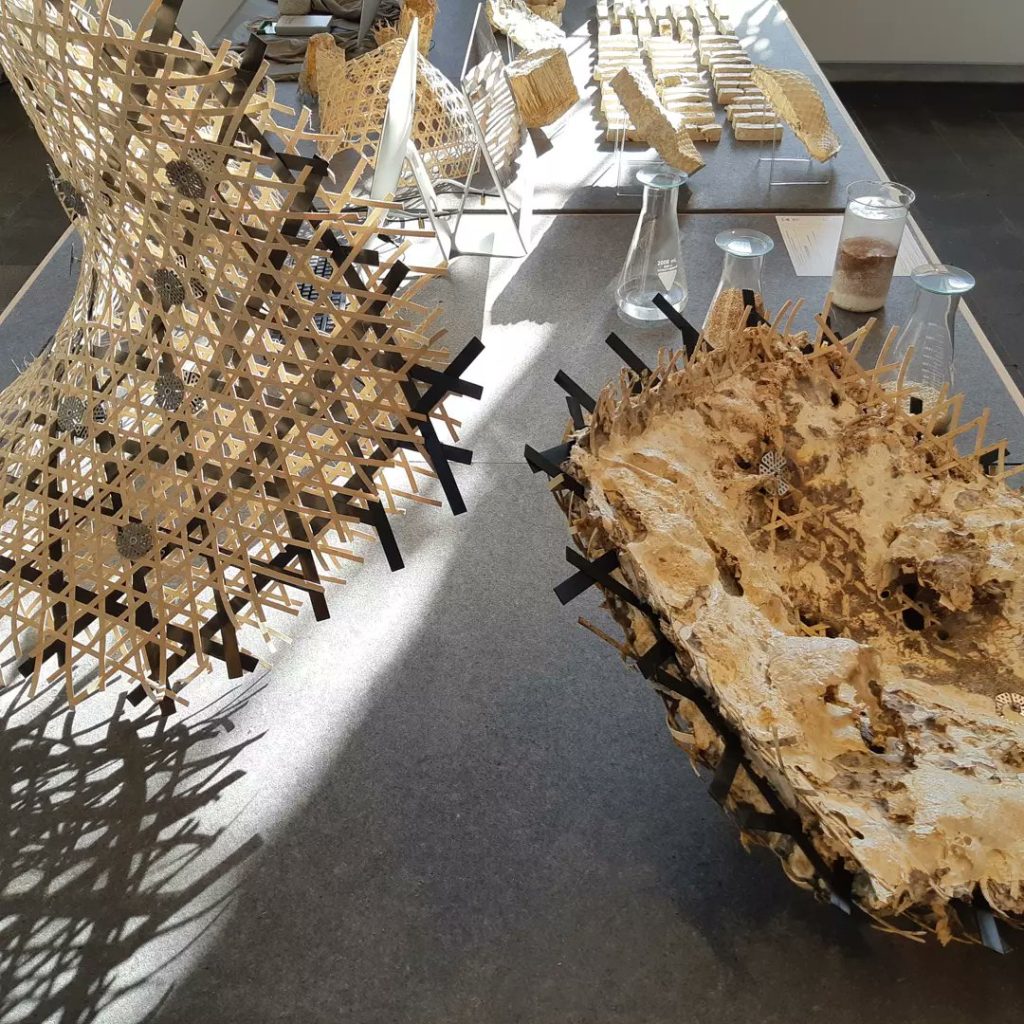As part of our goal to develop new construction approaches to mycelium-based composites, we’re exploring the topology of kagome weaves. These complex weaves can act as in-place moulds and structural reinforcements for the mycelium. Furthermore, a kagome scaffold allows us to explore more intricate architectural forms that support a desired computational goal. Here, we showcase some recent advancements in the automatic generation of principled kagome topology given an arbitrary target morphology.
Automating the generation of kagome scaffolds enables us to insert it into an iterative process where the environmental, computational, spatial, and fungal objectives for the architecture loop back into the design definition and morph it to a multidimensional optimum.
